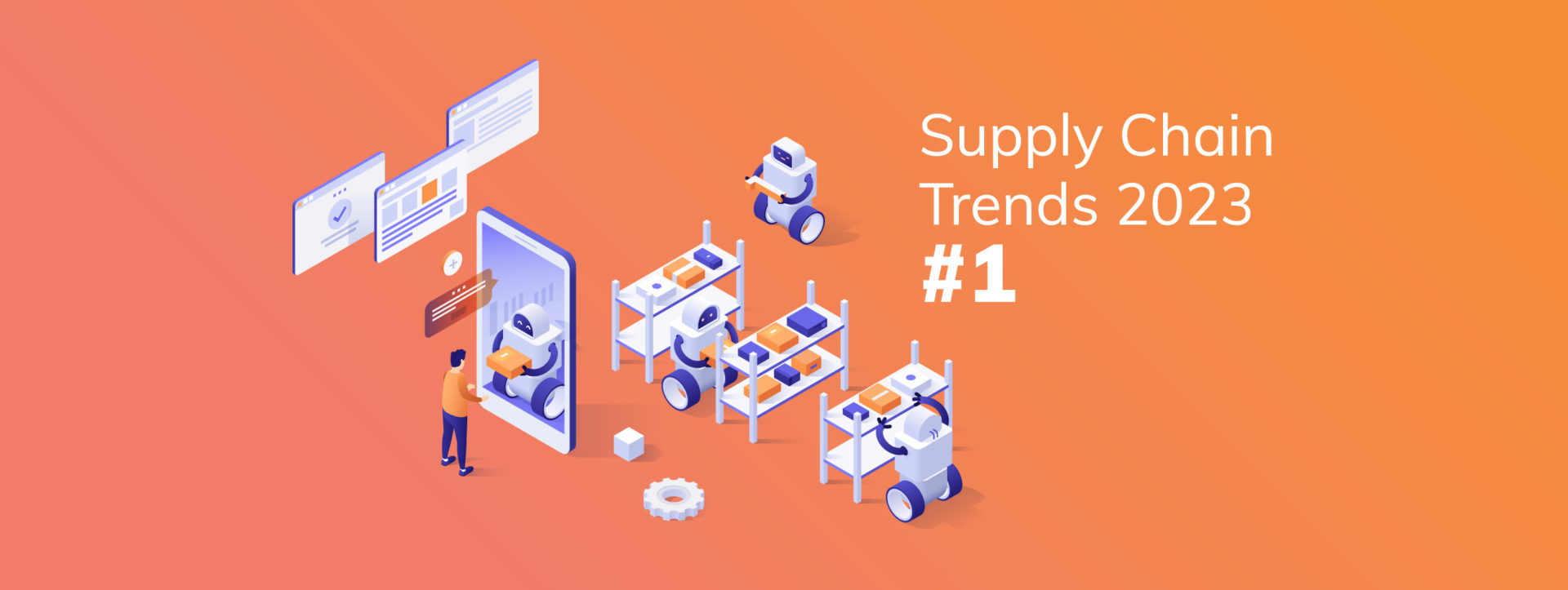
Embracing change: The power of Integrated Business Planning
In today’s dynamic business landscape, conventional planning processes riddled with departmental silos often hinder visibility…

At the advent of a new year, it is a good idea to not only take stock of what has happened but also look ahead and consider how things will likely pan out. In a new, supply chain-focused blog series, we will do exactly this, exploring the key supply chain trends we will see in 2023.
So, let’s kick off with the first article and explore how automation and risk mitigation impacts supply chain planning.
In response to the proliferation of data, the need for speed, and the rapid consideration of alternatives and scenarios, supply chain executives have evaluated a direct need for automation in their supply chain planning processes. The volume and granularity of data in supply chain planning are constantly increasing, so the speed of decision-making must improve.
This is where data-driven supply chain planning comes in. By leveraging advanced analytics and machine learning (ML) algorithms, companies can make more intelligent decisions faster and more accurately than ever. AI and ML are rapidly changing how we approach supply chain planning. By integrating AI into the end-to-end process, companies optimize their supply chain to achieve maximum efficiency.
AI-based solutions allow companies to automate various aspects of their supply chain, such as forecasting demand, managing inventory levels, and optimizing delivery routes. This automation helps companies save time and money, reduce delivery delays, and improve customer satisfaction. AI-powered solutions also help companies understand their customers’ needs and preferences more, allowing them to create more personalized experiences for their customers.
AI is becoming increasingly important in the world of Supply Chain planning as it will enable companies to remain competitive in an ever-changing market. We are seeing companies looking to supply chain planning automation platforms more and more and expect this trend to proliferate further in 2023 and onwards.
Risk management processes allow staff to focus on responding to risk detection by evaluating and managing risks appropriately. These processes keep data organized and accessible but often require AI capability to quickly evaluate the business environment and marketplace momentum. In doing so, new trends and triggers are easier to identify and plan for. The process should highlight the significance of risks and understand the potential impact within the business context to make knowledgeable decisions based on real-time data. An intelligent planning system feeding the market environment allows supply chain leaders to preserve their risk inventory with minor manual intervention.
There are vast amounts of data generated around a risk perspective that could be relevant in the intelligent planning view, elements such as:
Assessing all these manually is a colossal task. Managers looking to effectively manage risk must improve their focus on connecting and following tasks and assessments across teams. Real-time awareness and informing staff are critical. As leaders get a live view of risk evaluations, controls, and guidelines by consistently monitoring risks, they can follow tendencies, recognize causes that disturb risk levels, and identify areas requiring upgrading. Risk-aware leaders can produce insights centered on existing data and communicate outcomes across the company.
An intelligent and insightful planning system allows for repetitive tasks in the risk management cycle to be automated, enabling a better focus of their interest on more beneficial performance. The whole enterprise will make more knowledgeable assessments as a result.
Planning for risk mitigation is time-consuming. Teams can spend significant time gathering data and digesting their findings in reports instead of identifying more significant risks and managing responses.
In today’s volatile market, businesses must move faster and more efficiently, relying on advanced tools that automate work. Applying automation to risk monitoring processes enable supply chain teams to solely focus on live and significant risks instead of spending time on unnecessary assignments. Behind the scenes, the planning platform takes care of everything else!
Teams operating in other departments will likely have different perceptions, evaluations, and risk assessments, leading to dispersed perspectives and substandard risk identification and mitigation process. Managing risk by event on an as needs basis also complicates mitigation processes as crews must picture the overall requirements, plan for mitigating controls promptly, and align organization policies to safeguard their interests.
Data-driven supply chain planning helps companies identify operational risks and opportunities, optimize inventory levels, reduce costs, and improve customer service. With increased data availability, businesses can better understand their supply chains and make informed decisions that will help them stay ahead of the competition.
Intelligent planning platforms keep users connected, enabling more in-depth and faster evaluations for superior risk mitigation at a lower cost. Maturing the language and measures across the business will help a more consistent and nuanced response to significant events, allowing the planning of buffers for risk mitigation to be intelligently planned and reliably executed.
Intelligent planning and sophisticated orchestration must be built upon an innovative integrated planning platform that will leverage the power of the freshest data with robust decision tools that ensure flexibility and responsiveness to changes in the global demand and supply ecosystems.
Check out the other blogs in this series:
Explore the six key trends in greater detail in our latest eBook